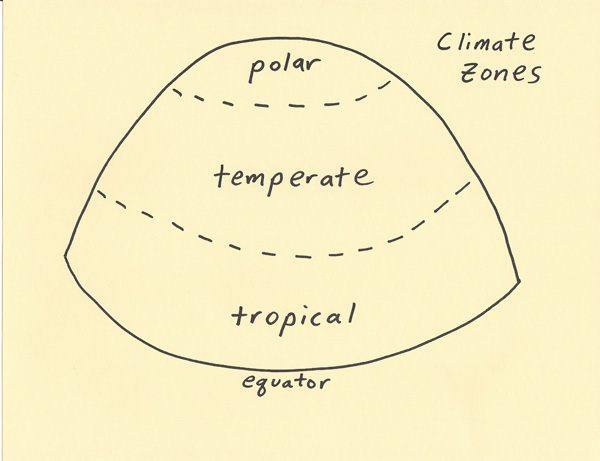
Earth can generally be divided into three climate zones which are polar, temperate and tropical. The main driver of a climate zone is the amount and directness of sunlight that reaches the Earth’s surface. In the tropical regions, there is a fairly constant amount of sunlight throughout the year. The maximum sun angle is also higher above the horizon. The sun is not closer to the tropical regions than the other regions, but the sunlight going through the atmosphere strikes the surface at a more direct angle. For example, a flashlight shining directly above a surface will produce a brighter area than a flashlight shining at a sharp angle to the surface even when the flashlight is the same height above the surface. The polar regions have sunlight striking the surface at a sharp angle. The cold half of the year also has very little sunlight and long nights. Very little sunlight results in very cold temperatures. Sunlight shining from near the horizon weakly warms the surface since the sunlight is spread over a large area, a high percentage of it is reflected, and ice and snow cause even a greater reflection than would occur on bare ground. The sun shining from near the horizon also has to pass through a greater distance of the atmosphere before reaching the surface. This results in greater reflection, scattering and absorption of sunlight in the air before it can reach the ground. The temperate zone (middle latitudes) represents a moderation between the hot tropics and the cold polar region. The weather in the temperate zone is seasonal. There can be a wide variation in temperatures experienced over the course of a year. The weather is not as harsh in the temperate regions as compared to the polar areas thus the temperate regions have more plant and animal life as compared to the poles. The temperate regions often have some of the best farms lands. The temperature zone is the porridge that is not too hot and not too cold.  |